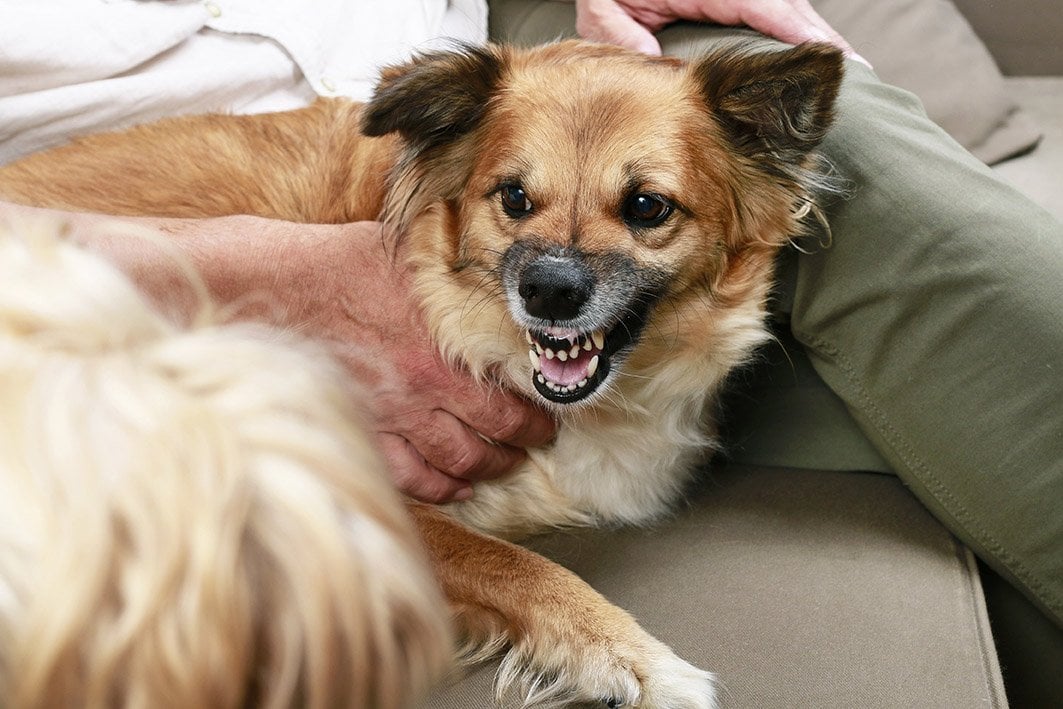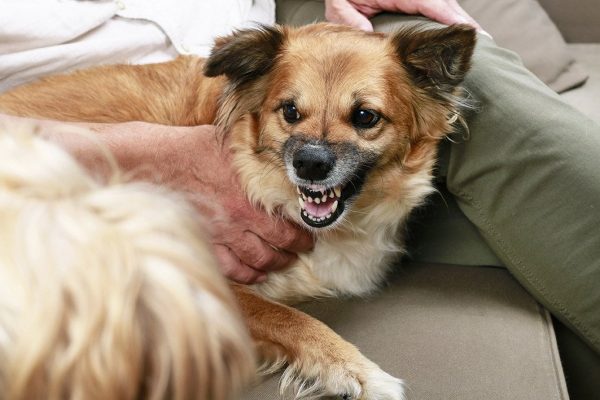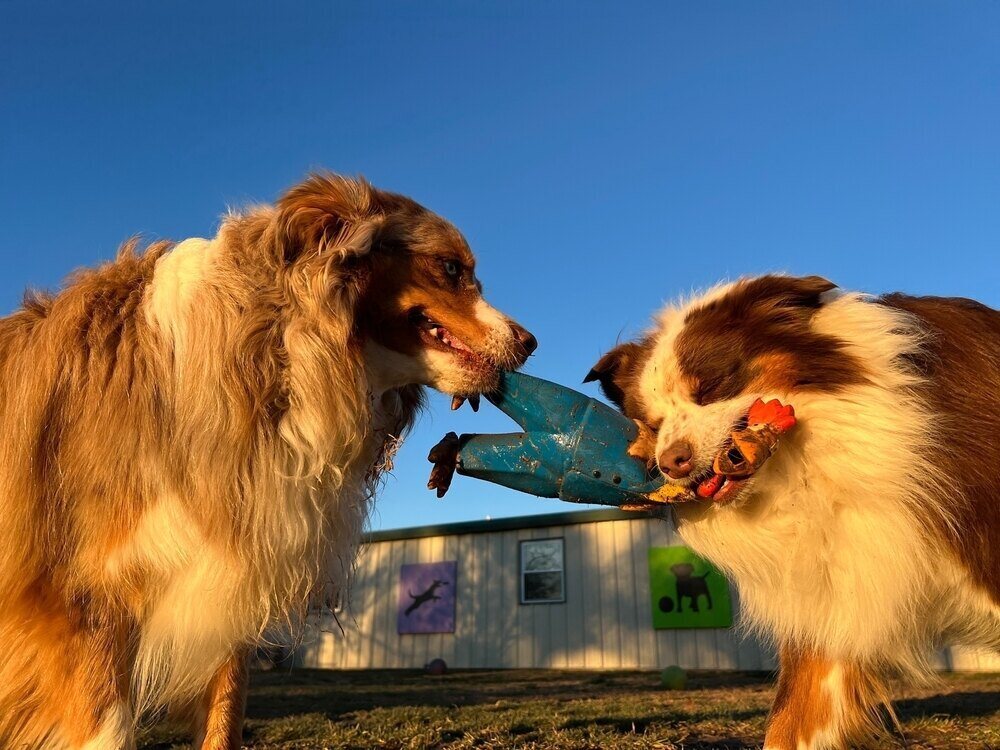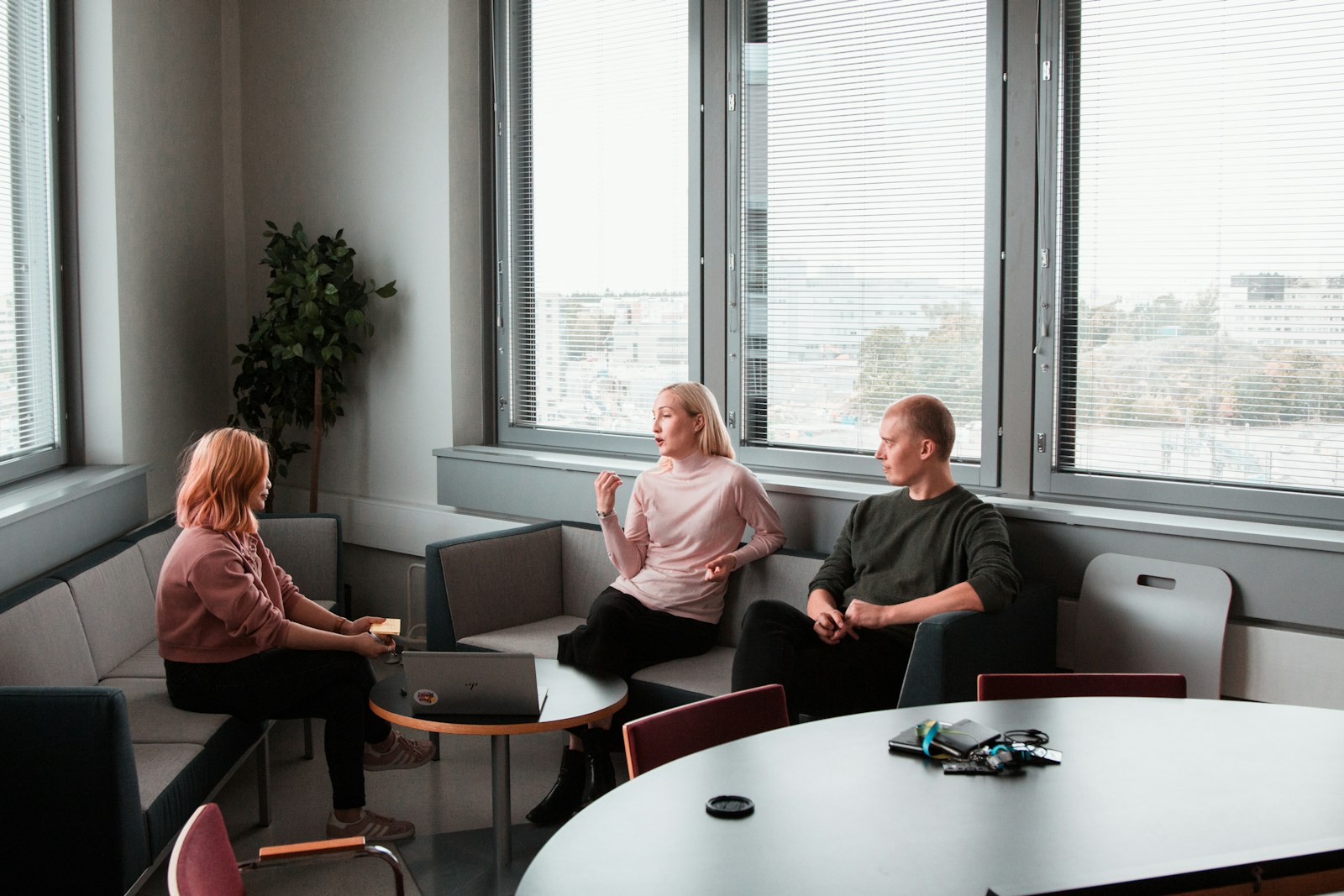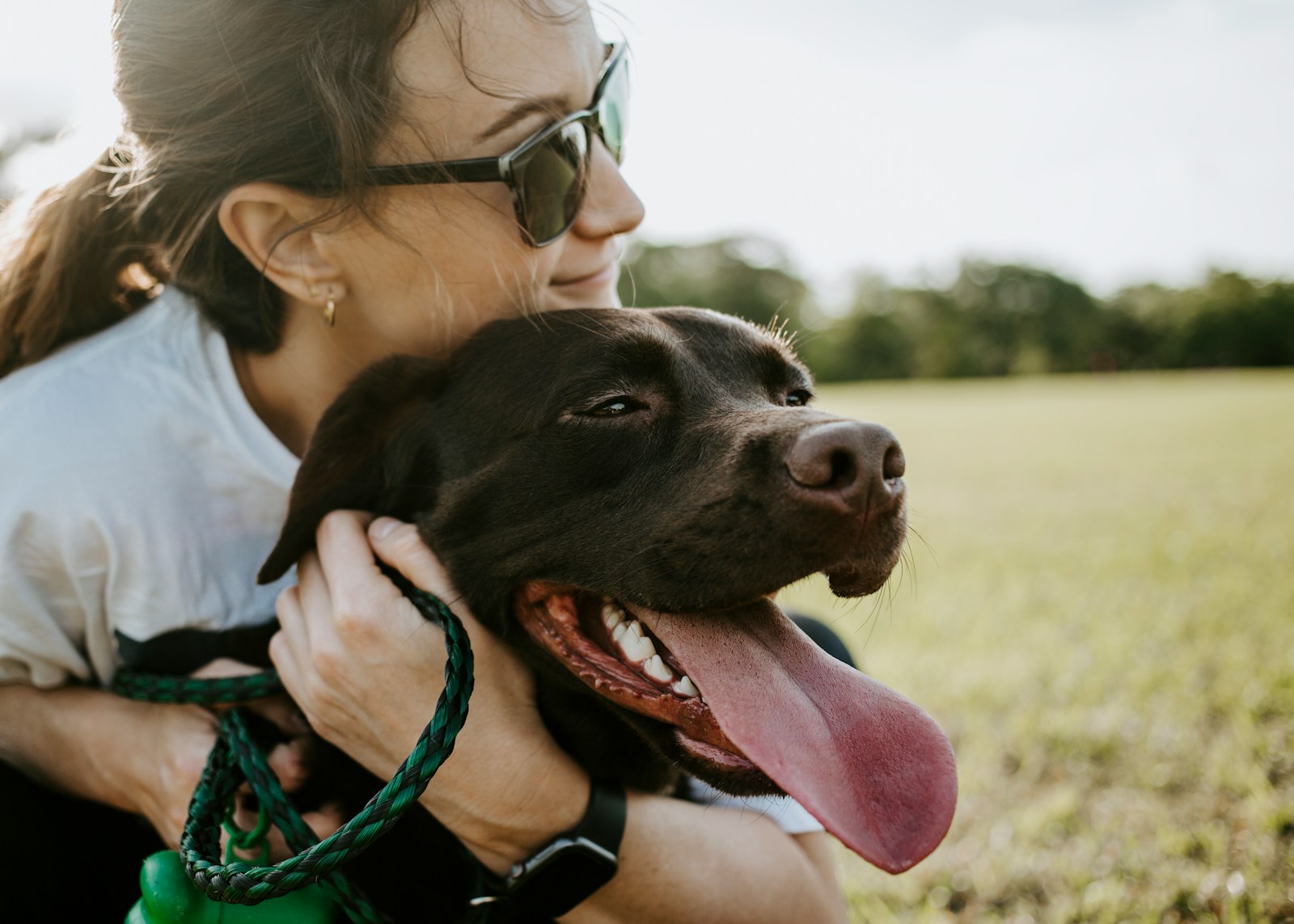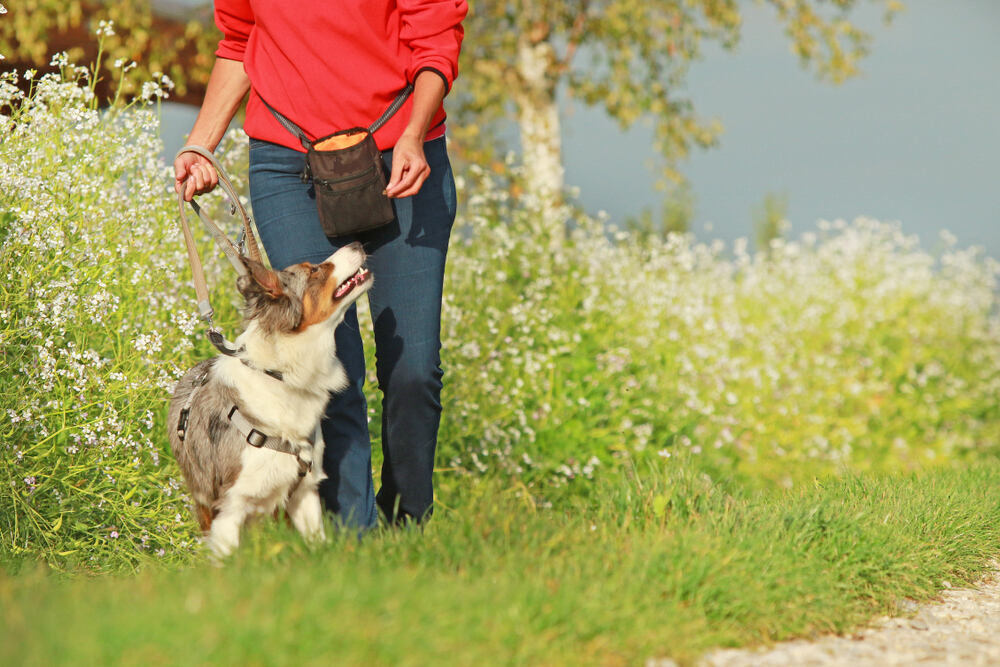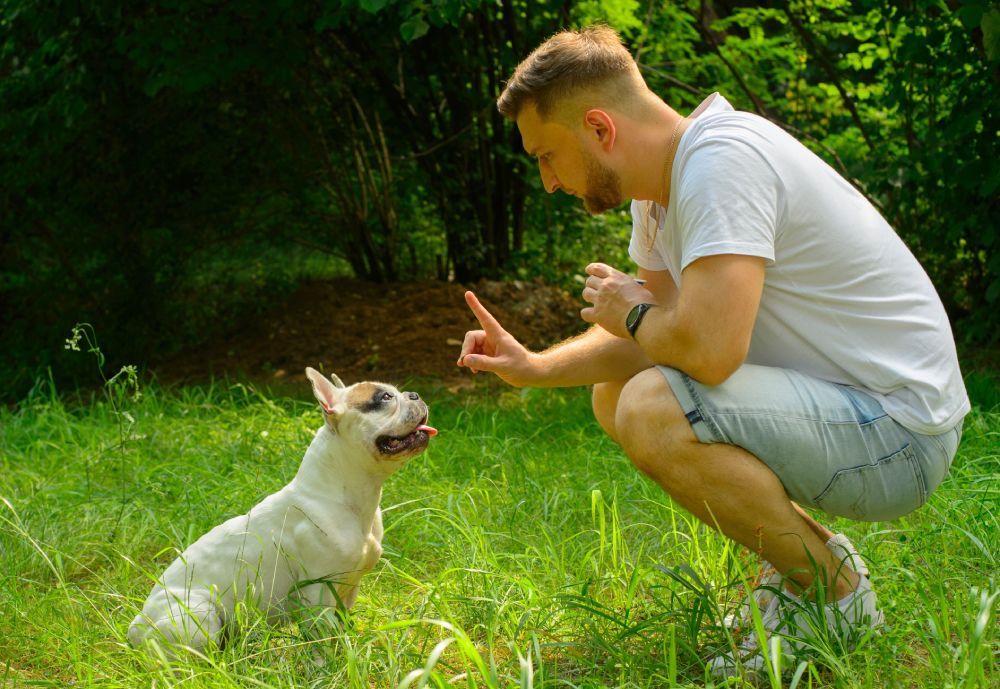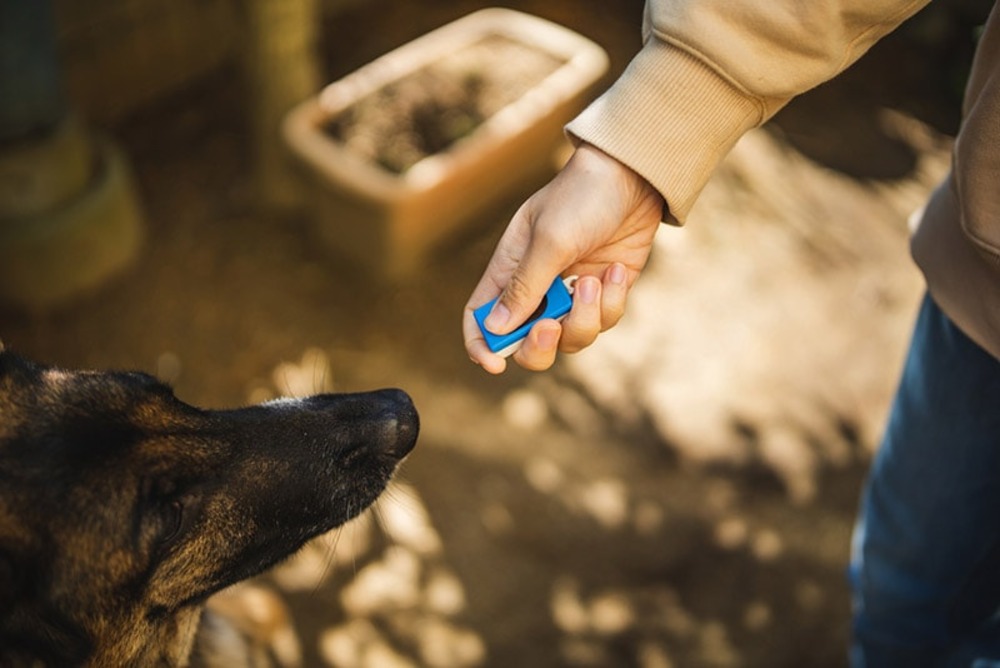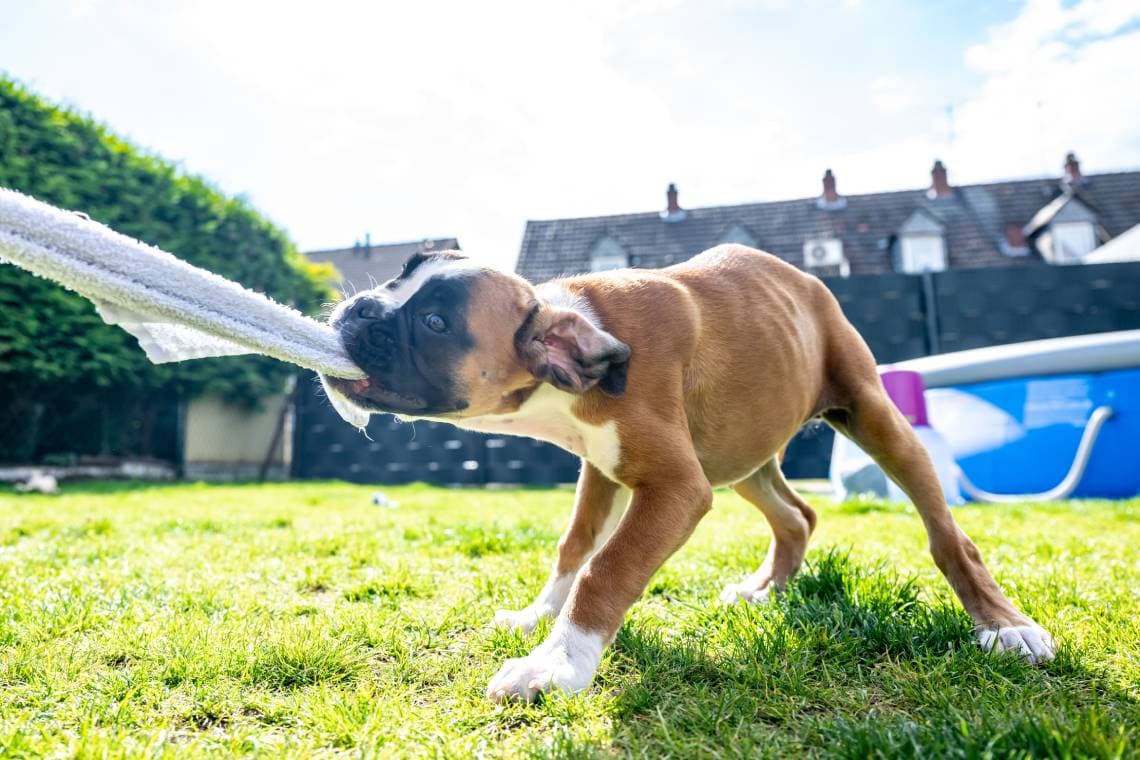Click to Skip Ahead
Many dog owners are taken aback when their usually affectionate pet begins growling or snapping at them when they try to retrieve a bowl of food or a toy. This behavior, known as resource guarding, is a commonly seen issue for trainers and animal behaviorists, but it can look different from dog to dog.
Resource guarding is sometimes also known as “possessive aggression”, which may be an easier term for understanding this behavior. If your dog shows signs of aggression with their possessions, it’s important to take the behavior seriously and make changes right away. Read on to learn the signs of resource guarding and what you need to do to stop it.

What Is Resource Guarding?
Resource guarding occurs when a dog tries to assert their ownership over something they deem valuable. It’s a very natural behavior, and one that serves canines well in the wild, but it is not appropriate for a family pet. It can happen with anything from food to toys to bedding or even something of yours they particularly enjoy. If you try to take something from a dog that’s actively resource-guarding, your pup may snap at you, growl, or worse.
Protecting a food source is a completely normal canine behavior. Think about it this way: your dog’s ancestors were scavengers that lived in a larger group setting around food sources. Food protection behavior was necessary then to keep other dogs away from their meal. But your dog doesn’t live in the wild, and guarding their food is not only unnecessary, but is an unacceptable and potentially dangerous behavior.
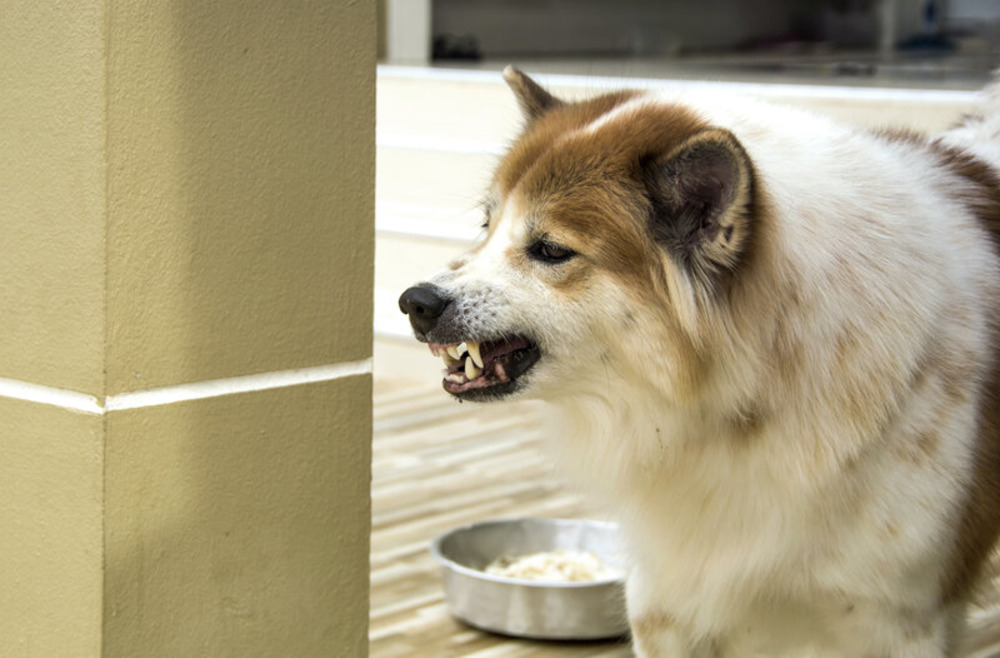
What Are the Signs of Resource Guarding?
The signs of resource guarding can vary depending on what your dog is trying to protect. For example, a dog guarding their food may try to gulp their food down faster. Other typical signs include:
Dogs may develop resource-guarding behaviors with any item they deem valuable. This may include an item that we wouldn’t consider important at all, such as a stolen sock. The most common items that can trigger these behaviors include: The most obvious cause of resource guarding is that your dog believes they have a valuable resource that must be protected at all costs. When they decide there’s a real threat to this resource, guarding instincts may be triggered. While the psychology behind why your dog resource guards items in their environment will vary, this behavior is typically rooted in anxiety. However, there may be other reasons, including: Now that you know what resource guarding is and how to spot it, what’s an owner to do when their dog displays signs of this behavior? Once you know your dog is indeed resource guarding, everyone in the household needs to be aware of this behavior. Everyone needs to understand what their dog’s body language is telling them and not encourage this behavior in any form. Ignoring the behavior or letting your dog keep the resource they are guarding will only encourage them to continue doing it, and potentially start guarding other things as well. How we tackle resource guarding depends very much on the age and size of the dog involved, and how aggressive their actions appear to be. The ideal aim is to make your dog feel secure enough that they don’t need to guard the resource. In younger pups, we have something of an upper hand in that they are less likely to be overtly aggressive or able to inflict much damage, but this should NEVER be taken for granted. When puppies are little, it can be easy to dismiss growling and possessive behavior as harmless or cute, but this is the key time to put a stop to resource guarding. When you have a young, impressionable pup, you should be able to take toys, food, or other items away from them without complaint, and do this over and over again until this is the case. When you are feeding your pup, you should be able to remove their bowl and even put your hand in the bowl without them growling, and this is something that is difficult and dangerous to do as your dog gets older, larger, and stronger. If we are dealing with an older or larger dog, we need to be much more careful about tackling this problem as there is a higher risk of them causing injury. But this is also why it is extremely important to address it. Training your dog to stop resource guarding does pose some risks, but there are arguably greater risks involved with allowing the behavior to continue. When we’re trying to address a problematic behavior, it helps to understand why your dog is expressing it. As we’ve discussed, resource guarding usually occurs when a dog feels threatened or anxious about losing something they value. The reason they might continue to use this strategy is that it has served its purpose in the past. So we need to show them that they can still make use of these resources without the need to guard them. If your dog is displaying these behaviors towards another pet, it may be because they don’t feel there are enough resources in your home to go around. Make sure everyone has access to enough food and toys they love to ensure they don’t feel motivated to guard their resources. If your pup is guarding a favorite bone or toy from another pet in the home, you may need to remove the trigger item entirely and only provide it when the two animals are separated. In some situations, the valuable resource will be whichever item the other dog has, rather than a specific toy or bone, and this is more to do with the relationship and competition between the dogs, rather than the resource itself. This is particularly common when siblings are kept together, and requires a different approach. Positive reinforcement is the most important component of training dogs. Remember that if a dog is expressing a particular behavior, it is because it has provided them with some sort of benefit in the past, so we need to offer a better reward for a desirable action. This doesn’t mean you should swap one resource for another, as they will be just as likely to guard it too. We need to reward them when they drop or release the item, and when they allow you to pick it up without protest. One very important part of addressing resource guarding is to eventually return the item to your dog, unless it is something dangerous or that they shouldn’t have. Most dogs guard an item because they are afraid they will lose it forever. By rewarding them for giving up the item, and then eventually returning it to them, they learn that releasing the valued object does not necessarily mean it is gone forever. We talked earlier about being able to take a bowl away when your dog is eating; it is just as important to give it back. The aim is to have your dog feel secure that they will not miss out on food or valuable resources if they are taken away, so they no longer feel that they need to guard them. Dogs that exhibit resource-guarding behaviors around food should be fed in a separate and secure area from other pets. Let them have the room to themselves to eat in peace without worrying about other animals trying to scavenge their food. When they are done eating, bring everyone together and offer some treats, allowing them to see that they can eat together without missing out. If this goes well, you can try doing this with some food in a bowl (again, after they have finished the bulk of their meal), and gradually progress until, hopefully, they learn that they can eat together in peace. However, in situations where there has been resource guarding of food between dogs, make sure meal times are always supervised. This applies to things that they cannot or should not be accessing, such as tissues or socks, human food items or children’s belongings. Put your laundry basket in your closed closet and put lids on your garbage cans. If your pup tries to guard a specific area of the home, like the sofa, do not allow them access to that area. If they are trying to guard their favorite human, walk away as soon as they exhibit even the most subtle guarding behaviors (such as staring) toward another person or pet in the home. Cues like “drop it” or “leave it” can be helpful for your resource-guarding pup to learn. Learning these cues can help them create positive associations with letting go of the items triggering them. Use low-value items when teaching your dog these cues first before practicing with the items they are guarding. Offer rewards away from the item you’re asking them to drop by tossing the treat away from the item or encouraging them to come to you to collect it. Unfortunately, there is no quick fix for correcting resource-guarding behaviors. It can take some time for your dog to realize that he doesn’t have to protect his belongings. Punishment is never the answer. Not only will punishing your pup affect the relationship you’re trying to build with them, but it can also make them more likely to be aggressive toward you. If your dog learns that their growling results in you yelling or hitting them, they may be less likely to growl next time and go straight for biting. Remember, your dog isn’t growling necessarily to be mean. They are simply trying to communicate something to you. If you are trying to take an item from your dog, do not be tempted to keep tugging and pulling if they are not letting go. This can be an enjoyable game for many dogs, or could put you at risk of being bitten. If your pup’s resource-guarding behaviors are out of control and none of the above techniques have helped, it may be time to ask for professional help. Your veterinarian will be a great place to start, as they may have other recommendations. They can also refer you to an animal behaviorist in your area who can work with you and your pup to address his behaviors. Resource guarding can rapidly escalate to become a dangerous behavior, so it is important to address quickly. When training a new pup, make sure you are able to remove food or toys from them without them growling or showing signs of being possessive, and be sure to reward this behavior with treats, praise, and eventually returning the item. When we understand that the primary motivation behind resource guarding is the fear of missing out or losing that item, we can start to teach our dogs that relinquishing the item is a positive experience, and that (unless it is something they should not have) it will be returned to them. Resource guarding can be overcome, but it is important to keep yourself and your family safe, and if you are having difficulty with this process, be sure to reach out for expert advice. Featured Image Credit: Agnes Kantaruk_Shutterstock
What Items Trigger Resource Guarding?
What Causes Resource Guarding?
The 12 Ways How to Stop Resource Guarding
1. Get Everyone in the Family on the Same Page
2. Understand the Risks
3. Understand the Motivation
4. Ensure There’s Enough Resources
5. Use Positive Reinforcement
6. Feed Pets in Separate Areas
7. Remove Access to Trigger Items
8. Teach the Right Cues
9. Be Patient
10. Never Use Punishment
11. Don’t Engage in Tug-o-War
12. Ask for Help

Final Thoughts

